Companion planting with annuals can be a great way to improve the health and productivity of your garden. Annual plants are those that complete their life cycle in one growing season, and they can provide a burst of color and interest to any garden.
What Is Companion Planting?
Companion planting is a gardening technique that involves planting different crops in close proximity to each other in order to take advantage of their natural characteristics and benefits. The idea behind companion planting is to create a mutually beneficial relationship between plants, in which one plant helps the other by improving soil quality, repelling pests, attracting beneficial insects, or enhancing growth.
There are many different ways to approach companion planting, and the specific combinations of plants will depend on a variety of factors, including soil type, climate, and the crops being grown. Some common examples of companion planting include planting nitrogen-fixing plants such as beans and peas alongside heavy feeders such as tomatoes and peppers, as the nitrogen-fixing plants can help to enrich the soil and improve the growth of the other plants. Another example is planting aromatic herbs such as basil and mint alongside vegetables, as the strong scent of these plants can help to repel pests.
Companion planting can also help to create a more diverse and resilient garden ecosystem, as it encourages a variety of beneficial insects and microorganisms to thrive. By combining different plants and allowing them to interact and support each other, gardeners can create a more sustainable and healthy garden environment while also improving the yield and quality of their crops.
The following annual flowers are commonly used for companion planting
- The plant: Alyssum, or sweet alyssum, is a low-growing flowering plant native to the Mediterranean region. It is a popular annual plant widely grown for its delicate clusters of small, sweet-smelling flowers, which bloom in shades of white, pink, lavender, and purple. Sweet alyssum grows best in full sun to partial shade and well-drained soil, and it is often used as a border plant or in containers.
- Attracts / Repels: Alyssum attracts a variety of pollinators, including bees and butterflies. It also attracts and shelters beneficial insects such as ground beetles and spiders. Gardeners also believe that sweet alyssum can repel certain pests, such as aphids and spider mites.
- Companions: Alyssum is a valuable addition to the vegetable garden and an excellent companion plant for broccoli, Brussel sprouts, cabbage, eggplant, and lettuce.
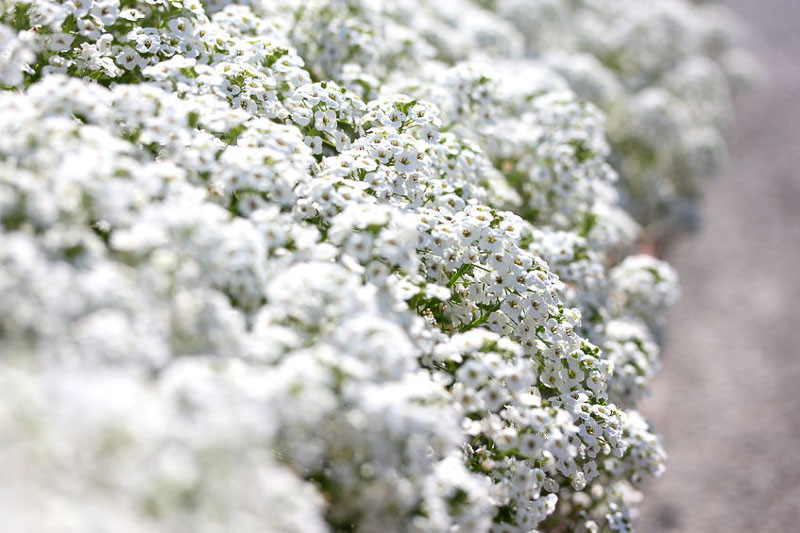
- The plant: Centaurea cyanus, commonly known as cornflower or bachelor’s button, is an annual flowering plant native to Europe. It is known for its delicate blue, pink, white, or purple flowers, usually produced from late spring to summer. The plant itself typically grows up to 3 feet (90 cm) tall and has lance-shaped leaves that are typically gray-green in color. The petals of cornflowers are edible and have been used to flavor tea, soups, and salads.
- Attracts / Repels: Bachelor’s button flowers offer early nectar for many beneficial insects in the garden, including bees, butterflies, and pollinators.
- Companions: Good companions include coreopsis, gayfeather, lady’s mantle, Shasta daisy, and yarrow.
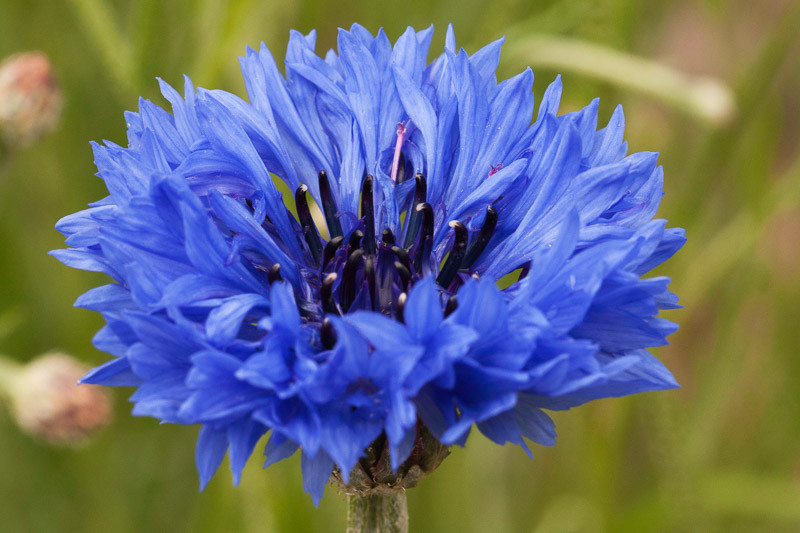
- The plant: Calendula officinalis, commonly known as pot marigold, is an annual flowering plant native to southwestern Asia, western Europe, and the Mediterranean. It is known for its bright, showy flowers, which can be yellow, orange, or a combination of both. The plant itself typically grows up to 2 feet (60 cm) tall and has lance-shaped leaves that are a vibrant green color. The petals of calendula flowers are edible and have been used in cooking and as a natural dye.
- Attracts / Repels: Calendula is beneficial for attracting pollinators to the garden, including bees and butterflies. It also repels asparagus beetles, nematodes, and tomato hornworms.
- Companions: Calendula is a great companion plant for asparagus, beans, broccoli, Brussel sprouts, carrots, cucumbers, potatoes, pumpkins, and tomatoes.
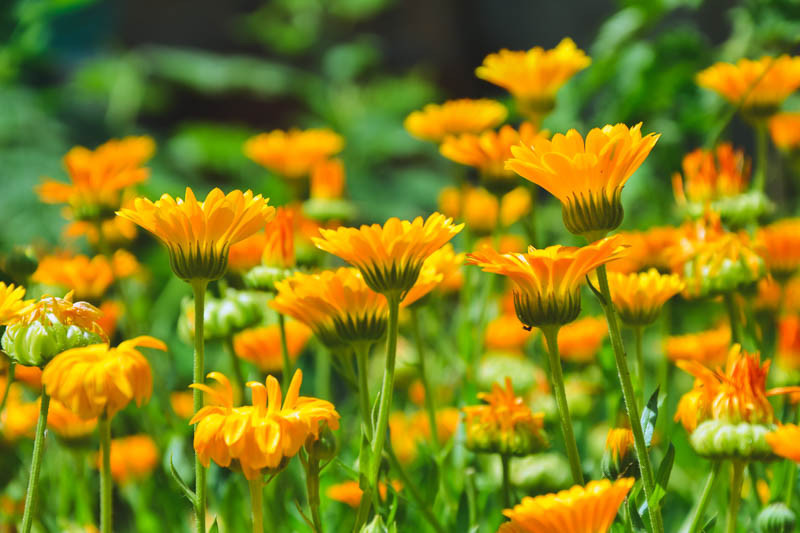
- The plant: Coreopsis tinctoria, commonly known as plains coreopsis or golden tickseed, is an annual flowering plant native to North America. It is known for its bright yellow and red flowers that bloom from early summer to fall. The plant typically grows up to 3 feet (90 cm) tall and has bright green, lance-shaped leaves arranged alternately along the stem. The plant is easy to grow and requires little maintenance, making it a favorite among gardeners who are looking to add a burst of color to their garden.
- Attracts / Repels: Coreopsis is beneficial for attracting pollinators to the garden, including bees and butterflies. It also attracts beneficial insects such as hoverflies, soldier beetles, and tachinid flies.
- Companions: Tickseed is a great companion plant for beans, cucumbers, eggplant, and tomatoes.

- The plant: Cosmos is an annual flowering plant native to Mexico and Central America. The plant produces showy, daisy-like flowers in shades of pink, white, and purple, with a central disk surrounded by ray petals. The flowers are produced on tall, slender stems that can grow up to 6 feet tall (180 cm). Cosmos has fern-like, finely divided leaves arranged alternately along the stem. It is a popular ornamental plant in gardens and landscapes due to its ease of cultivation, tolerance to drought, and long-lasting blooms.
- Attracts / Repels: Cosmos flowers are attractive to bees, butterflies, and other pollinators. It also attracts beneficial insects such as hoverflies, damsel bugs, lacewings, parasitic wasps, and tachinid flies.
- Companions: Cosmos flowers are great companion plants for celery and crowded peas.
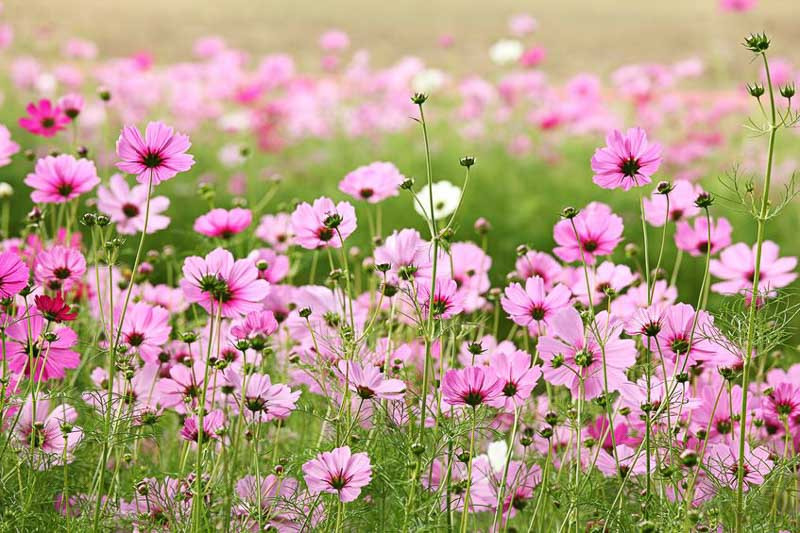
- The plant: Gazania rigens, commonly known as treasure flower, is a tender perennial plant native to South Africa, often grown as an annual. It boasts bright, showy flowers that bloom in shades of yellow, orange, and red, with dark centers. The plant typically grows up to 12 inches (30 cm) tall and has thick, spoon-shaped leaves arranged in a rosette at the base of the stem. Gazania is a popular choice for rock gardens, borders, and ground cover. It is also drought-tolerant and requires little maintenance, making it a favorite among gardeners.
- Attracts / Repels: Gazania is attractive to bees and other pollinators and resistant to deer and rabbits. It also attracts beneficial insects such as ladybugs and soldier beetles which are natural predators of insects harmful to plants, such as aphids, mealybugs, mites, and scales.
- Companions: Gazania can be paired with other drought-tolerant flowers such as gomphrena and coreopsis.
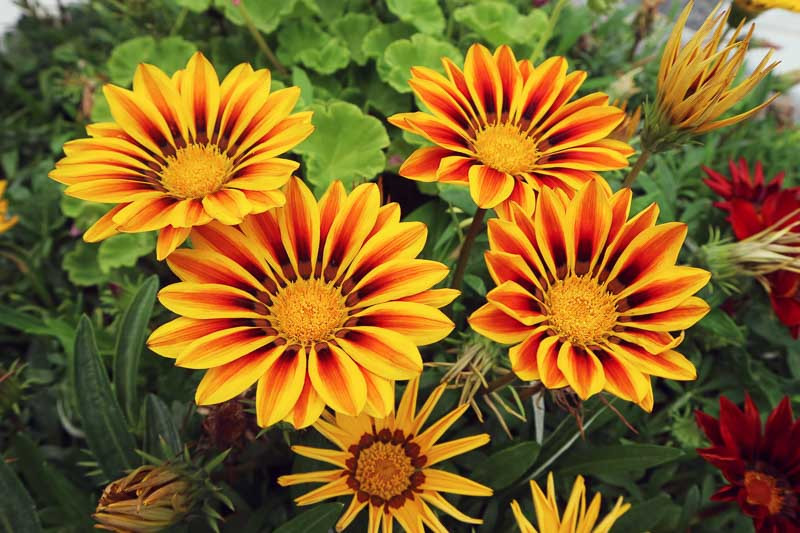
- The plant: Pelargoniums are native to southern Africa and Australia but grown worldwide as ornamental plants. Pelargoniums are known for their brightly colored flowers and aromatic leaves, which come in various shapes and sizes. The flowers can be single or double and come in shades of pink, red, orange, white, and purple, among others. The leaves are typically lobed or dissected and can be green, variegated, or marked with other colors. Pelargoniums are often grown as houseplants or in gardens as bedding plants, border plants, or container plants.
- Attracts / Repels: Geranium repels cabbage worms and Japanese beetles and will deter beet leafhoppers.
- Companions: Geraniums are great companions for beets, corn, dahlia, grape vine, and roses.
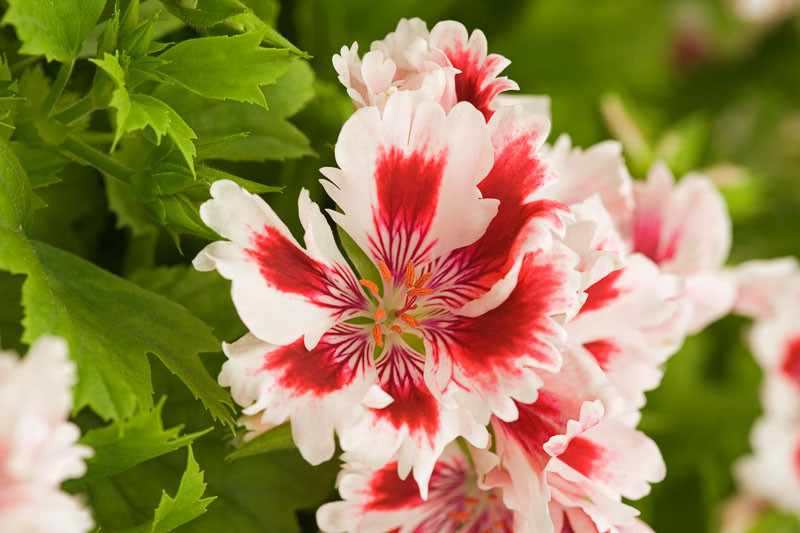
- The plant: Marigolds are an annual flowering plant in the daisy family (Asteraceae), native to the Americas, but have been widely cultivated and naturalized in other parts of the world. Marigolds are known for their bright, showy flowers that bloom in shades of yellow, orange, and red. The flowers are produced on sturdy stems and have a daisy-like appearance, with a central disk surrounded by ray petals. Marigolds are popular garden plants due to their long bloom time, easy cultivation, and pest-resistant qualities.
- Attracts / Repels: Marigolds attract a variety of beneficial insects to the garden, including ladybugs, lacewings, and hoverflies, which feed on aphids and other common garden pests. The flowers also provide nectar and pollen for bees and other pollinators, making them a great addition to a pollinator-friendly garden. Additionally, marigolds are known to repel some pests, such as cabbage maggot, Colorado potato beetle, corn earworm, cucumber beetle, flea beetle, Mexican bean beetle, squash bug, nematodes, and even rabbits.
- Companions: Marigolds are great companions for broccoli, cabbage, eggplant, onions, pumpkins, tomatoes, and zucchini.
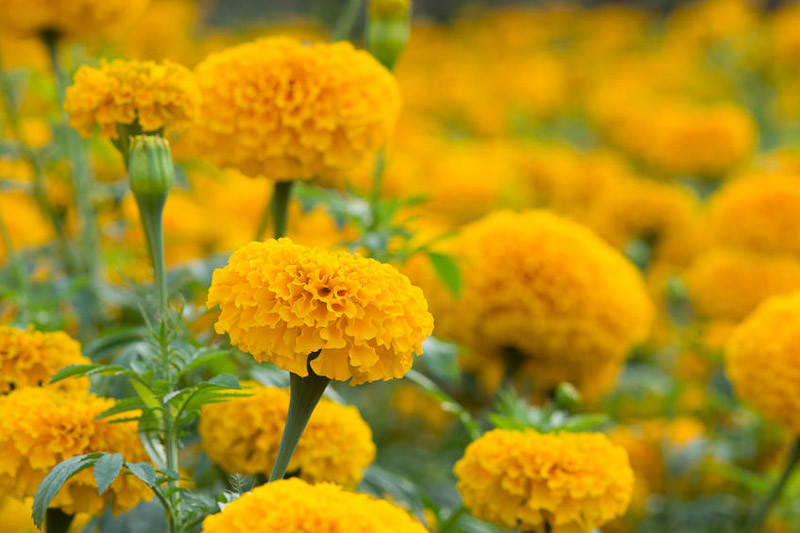
- The plant: Tithonia rotundifolia, also known as Mexican sunflower or tree marigold, is a perennial plant native to Mexico and Central America. The plant is named for its large, showy flowers, which bloom in shades of orange, yellow, and red. The leaves are large, broad, and hairy, and the plant can grow up to 6 feet (180 cm) tall. Tithonia rotundifolia is a popular garden plant due to its long bloom time and easy cultivation.
- Attracts / Repels: Mexican sunflowers attract pollinators, such as bees and butterflies, and various beneficial insects, including beneficial wasps, flies, and the soldier beetle, and provide shelter for spiders. There is an added benefit to this annual – butterflies love them.
- Companions: These flowers make great companion plants with eggplants, peppers, and tomatoes.
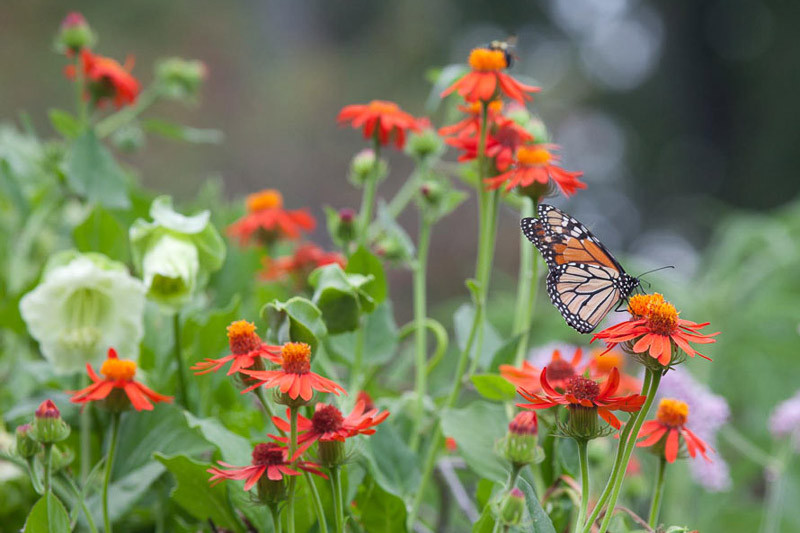
- The plant: Tropaeolum majus, commonly known as nasturtium, is a flowering annual plant native to South America. The plant produces round, bright green leaves and vibrant, trumpet-shaped flowers ranging from yellow to orange to red. The flowers are often used in salads and as a garnish due to their slightly peppery taste. Nasturtiums are a popular garden plant due to their attractive flowers and easy cultivation.
- Attracts / Repels: Nasturtiums attract beneficial insects, such as bees and butterflies. They are also known to repel certain pests, such as aphids, asparagus beetles, cabbage looper, carrot fly, Colorado potato beetle, cucumber beetle, flea beetle, imported cabbageworm, Japanese beetle, Mexican bean beetle, squash bug, and whiteflies – making them a great addition to an organic garden.
- Companions: These flowers make great companion plants with beans, broccoli, cabbage, cucumber, pumpkins, radishes, and zucchini.
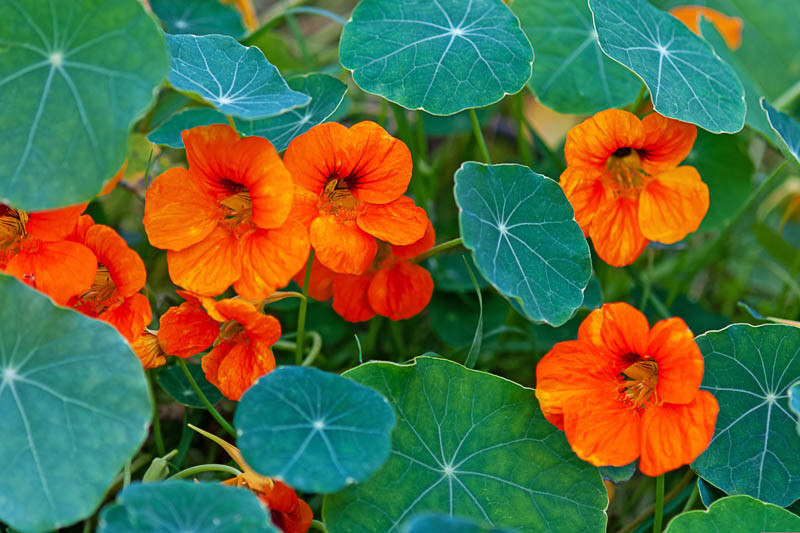
- The plant: Petunias are part of the nightshade family (Solanaceae) and are related to tomatoes, potatoes, and peppers. Petunias produce trumpet-shaped flowers in various colors, including pink, red, purple, white, and yellow, and can be solid or variegated. They are popular garden plants due to their showy flowers and easy cultivation and are often used as bedding plants, container plants, and hanging baskets.
- Attracts / Repels: Petunias attract beneficial insects, such as bees and butterflies. They are also known to repel certain pests, such as aphids, asparagus beetles, leafhoppers, Mexican bean beetle, and many general garden pests – making them a great addition to an organic garden.
- Companions: These flowers make great companion plants with asparagus, beans, fava beans, Lima beans, and chili peppers.
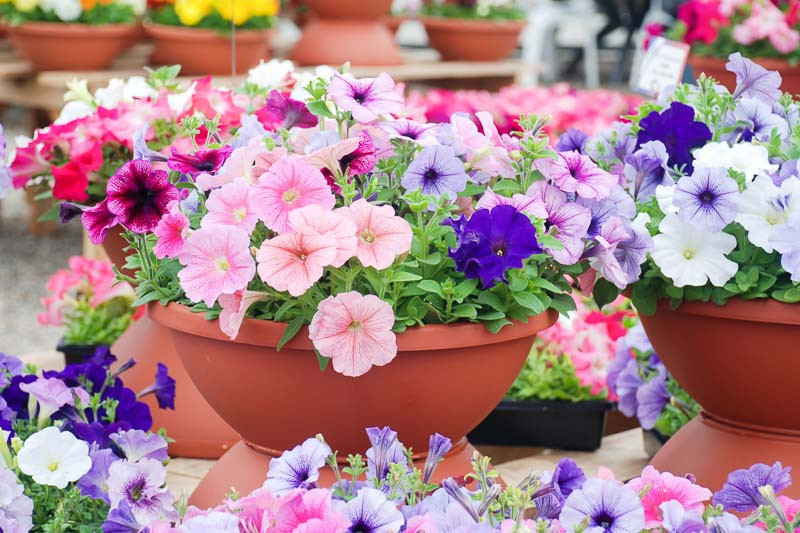
- The plant: Helianthus annuus, commonly known as the sunflower, is an annual flowering plant native to North America. The plant produces large, bright yellow flowers with brown centers commonly used in floral arrangements and as a bird food source. The flowers can grow up to 12 inches (30 cm) in diameter, and the plant can reach up to 10 feet (3 m) in height.
- Attracts / Repels: Sunflowers attract pollinators, such as bees and butterflies. also attracts hoverflies, lacewings, parasitic wasps, tachinid flies, and many birds, including hummingbirds. They have an interesting relationship with ants and aphids, as the ants will herd them onto the stalks, where they can do little damage because the stalks are so tough. Plant sunflowers wherever aphids are a problem to get rid of them.
- Companions: Sunflowers pair well with pole beans, tomatillos, and pomegranates.
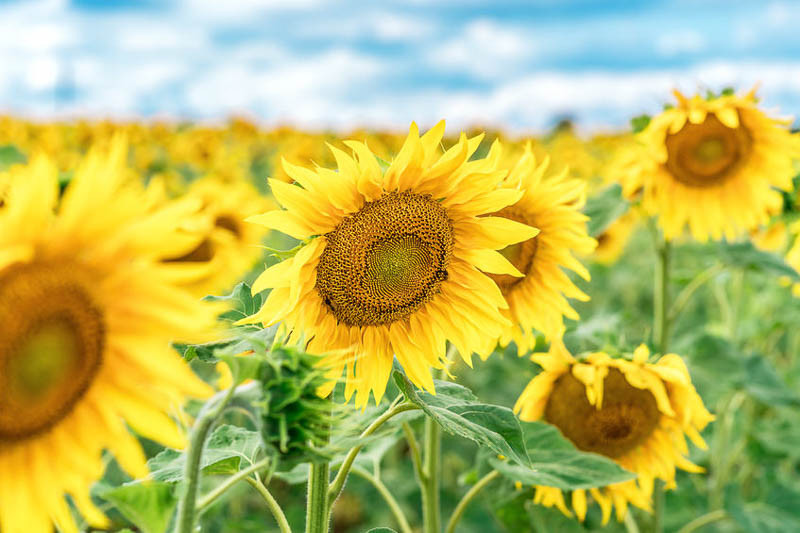
- The plant: Zinnia is a genus of flowering plants native to North and South America. Zinnias produce single or double flowers in various colors, including pink, red, orange, yellow, and purple, and can range in size from 1 to 6 inches (2-15 cm) in diameter. They are popular garden plants due to their bright, showy flowers and easy cultivation, and they are often used as border plants, bedding plants, and cut flowers. They are known for their long blooming season and ability to thrive in hot, dry conditions.
- Attracts / Repels: Zinnia flowers attract pollinators, such as bees and butterflies, as well as hummingbirds. They also attract ladybugs, parasitic wasps, and parasitic flies.
- Companions: Zinnia pairs well with beans, cabbage, lettuce, pomegranate, and zucchini.
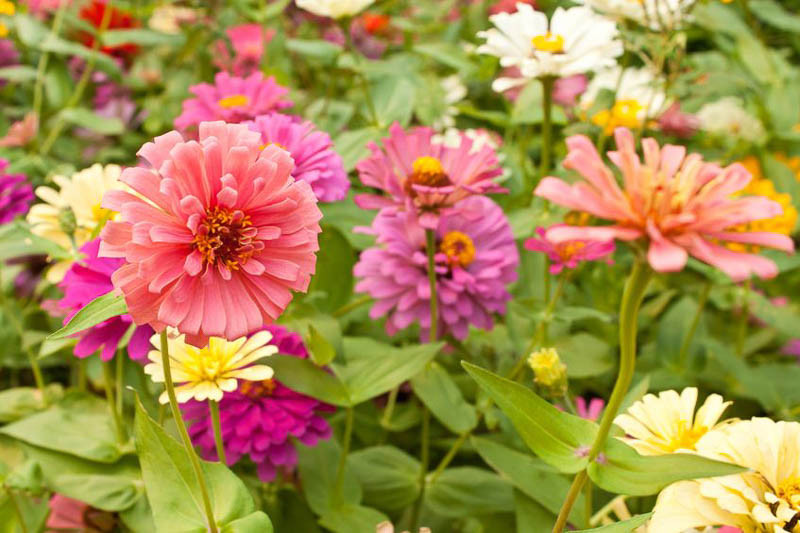
While every effort has been made to describe these plants accurately, please keep in mind that height, bloom time, and color may differ in various climates. The description of these plants has been written based on numerous outside resources.